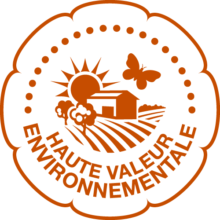Vineyard and harvest
Vineyard
A magical region
The reputation of Sauternes wines is due to exceptional geographical and geological circumstances.
The Sauternais region is situated on the left bank of the river Garonne and along the river Ciron, about 25 miles south of Bordeaux and it comprises five villages: Barsac, Bommes, Fargues de Langon, Preignac and Sauternes.
The small river Ciron has its source in the Landes and carries along its course many dead leaves, twigs and other natural residues that nourish the Sauternes soil. But the main asset of the Ciron is its very cool water – much cooler than the Garonne’s.
This difference in temperature gives rise to a micro-climate that is characteristic of the communes on the confluence of the Garonne. As a result, morning mists appear in autumn.
These cool, damp clouds encourage the proliferation of a tiny fungus called Botrytis Cinerea. The fungus settles in the grapes, causing water to evaporate and sugars to concentrate. The skins become thinner and the grapes take on a purplish colour: this is noble rot, a unique phenomenon that gives Sauternes its distinctive character.
However, Sauternes’ reputation is not due solely to the remarkable action of this fungus. It is the result of the simultaneous effects of several geological factors, such as the general north-easterly exposure that is characteristic of the major French wine-growing regions (from the Médoc to Alsace).
The subsoil is also a key element: gravel, clay and limestone help give each commune of the Sauternes appellation its own personality.
Grape varieties
3 grape varieties are used in Sauternes:
- Sémillon ideally lends its fullness and suppleness to sweet wines;
- Sauvignon brings energy and power;
- Muscadelle adds its slight muscat flavor.
The harvest
Hand-picking
The harvest is a key moment in Sauternes; it is totally dependent on the grapes’ ripeness and the growth of the fungus Botrytis Cinerea or “noble rot”, which concentrates the level of sugar in each berry.
But grape clusters never develop at the same pace.
You must be patient, walk up and down the rows and check each vine stock sometimes up to 4 times, in order to pick each grape when fully ripe.
That harvesting method is called “successive sorting”, a slow and laborious process which requires the greatest care of pickers; it is all the more demanding as grapes must be picked when totally dry.
But that is the price of quality!
Vignobles du Hayot are ecologically responsible
Vignobles du Hayot has been certified HVE, Haute Valeur Environnementale, synonymous with sustainable viticulture since 2019.
In fact, the estate is committed to respecting the environment by practicing integrated agriculture, reducing chemical inputs in particular.
Here are just a few examples of how we’ve adapted our practices:
- Weed management has been exclusively mechanical for several years, leaving all rows grassed and one cavaillon worked.
- To combat grape worms, a vine pest that causes both quantitative and qualitative damage, we use sexual confusion. This biological and biocontrol method enables us to combat this pest effectively without the use of additional insecticides.
